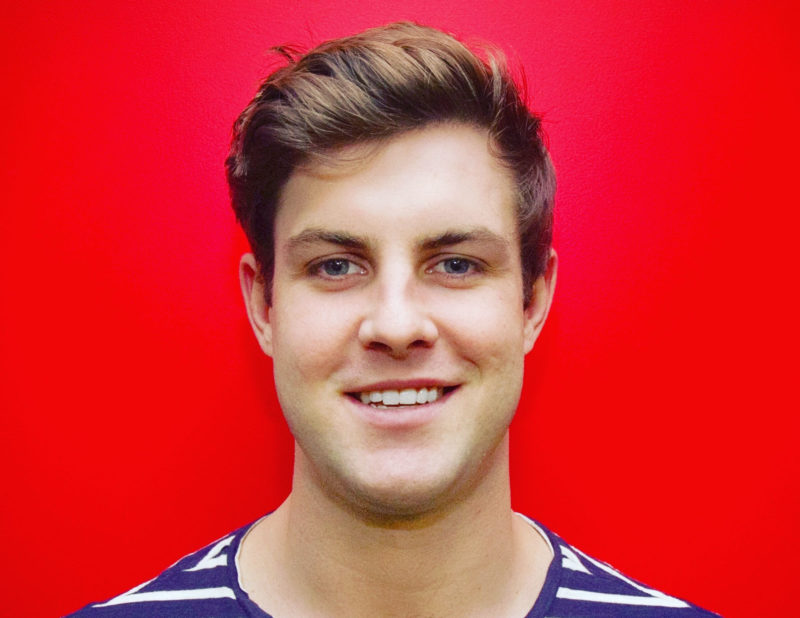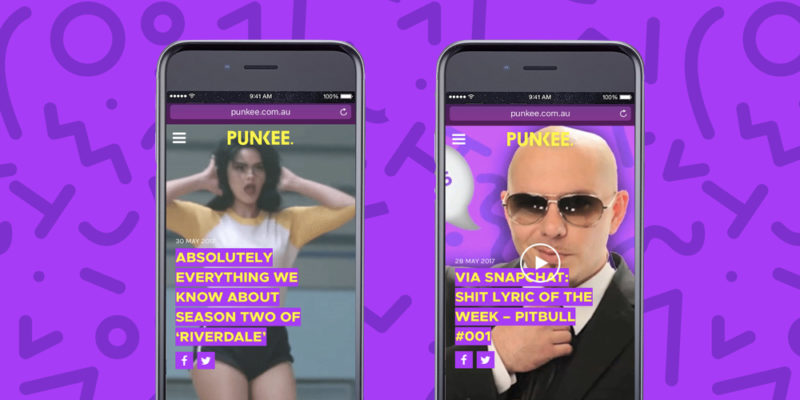Why Punkee is choosing likes and shares over website traffic
Punkee’s Tom Pitney speaks to Mumbrella’s Zoe Samios about why the youth site’s focus is all about being where the audience is, as opposed to trying to drag them away to somewhere else.
When Junkee Media’s The Vine rebranded to Punkee earlier this year it did not anticipate the audience it would quickly receive.
In four months since the launch of the Gen Z mobile first website, Punkee has had more than 12.3m Facebook video views, 950,000 fan engagements and 1.5m Australian sessions on its website.
But driving people to Punkee’s website isn’t the focus. Instead, it’s about finding “natural ways” for brands to be part of a conversation, Punkee’s managing editor Tom Pitney says.
“The website really isn’t the place where we monetise our audience. It is through our display but mainly we want to engage fans, grow our audience and then find natural ways the brands can be a part of the conversation,” he tells Mumbrella.
“The difference with Punkee is that our strategy isn’t necessarily to convert people to our website first, we’d love to do that, that’s the nice thing that happens on the fallback of what we do but the main goal is basically to get likes and shares and fan engagement and that is what drives people to our website later.
For Pitney, the focus is creating engaging videos, and getting brands involved in native content.
He adds: “We’ve just experimented with native memes, so creating memes for brands. It’s got to be the right fit and there is an art form to it,” he says.
Pitney says the youth website, which is well known for its recaps of Ten’s The Bachelor and The Bachelorette, attracts audiences by keeping it conversational and talking as “mates.”
“Our main strategy is to be reactive so we are first when it comes to responding to pop culture stuff, or stuff that’s in our heartland but it’s doing it in a really original and funny way.
“What we’ve realised with video is that things don’t have to be really highly polished and refined. The audience want to tag and share stuff that’s funny and their mates are going to find funny. I’ve seen research that shows the opposite. The more polished and refined something is actually, the less people are going to feel like its personalised and from a friend.
“Obviously there’s a bit of work that goes into making it feel that way but with our brand we have that flexibility to be less refined.”
Pitney admits The Bachelor and The Bachelorette have pushed up video views, but he’s confident viewers won’t go away once the shows end.
“When we look the archive of stuff, particularly stuff we did in the first month, some of the highest viewed videos are not Bachelor related and so much of our energy is going into getting these recaps because we are building an audience through serial-based content but once that drops off we will have so much time and energy to fill that gap.”
“I’m hopeful with the strategy, with what we are planning, I think our video views will grow.”
He says he’s aiming for 4m average video views a month until the end of the year.
Responding to how they will differentiate their product from Pedestrian’s upcoming teen website Pez, Pitney says: “It’s nice to see them look at what we are doing and I guess identify that it’s a space and potential there. It’s nice to have a start ahead of them. We’ll have to wait and see what Pez comes up with.”
Looking to the future, Pitney believes websites will be used less and less but he admits there are challenges for publishers with video going forward.
“I think less and less websites are needed and the amount of time we put into our desktop site especially was very minimal,” he says.
“But more and more it needs to be optimised for mobile. It’s less and less about being where the audience is as opposed to trying to drag them away to somewhere else.
“Video is going to become more and more prevalent, and for publishers that serves as a challenge because cut through has become harder and harder. There was a time a couple of months ago, if you had a video you were pretty much likely to get a nice push from Facebook. Now everyone is producing video so to get in people’s feeds is harder and harder,” he explains to Mumbrella.
“YouTube is also – especially for Gen Z – a platform that’s flourishing but the war between YouTube and Facebook particularly Instagram as well is just heating up, and that’s going to drive more competitiveness for Facebook to push video.”
Tom Pitney will be speaking at Mumbrella’s Publish Conference next week about how to make great videos. Click here to find out more and buy tickets.





“The difference with Punkee is that our strategy isn’t necessarily to convert people to our website first, we’d love to do that, that’s the nice thing that happens on the fallback of what we do but the main goal is basically to get likes and shares and fan engagement and that is what drives people to our website later”.
There is nothing new here, sounds exactly like what most social strategists aim to do? Awareness, engagement, conversion
It’s still way down on the UB’s TheVine used to get 9 years ago when it launched as a JV between Fairfax and LifeLounge.
Good start. A bit more to go to win back your audience guys!